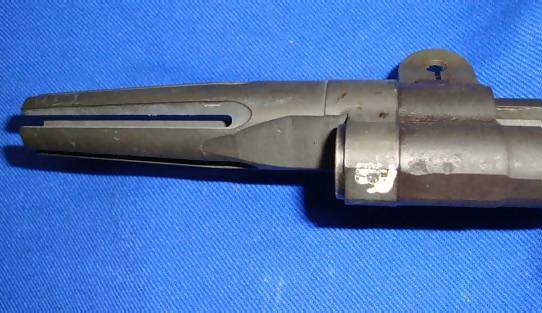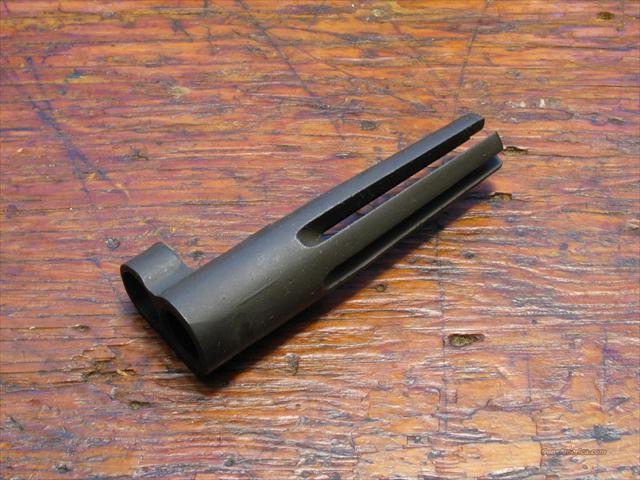-
FREE MEMBER
NO Posting or PM's Allowed

How to identify USGI parts
I just purchased a federal ordnance m14. I am aware of the reputation these guns have and was just wondering how I could identify for sure which parts if any on the gun are USGI. the s/n is outside of the range that USGI parts were likely to have been used but I've gotten conflicting reports on that.
Can anyone tell me how to check for USGI parts, or how to do some preliminary checking on how good of a gun I have purchsed?
Information
 |
Warning: This is a relatively older thread
This discussion is older than 360 days. Some information contained in it may no longer be current. |
|
-
12-31-2010 05:16 PM
# ADS
Friends and Sponsors

-
FREE MEMBER
NO Posting or PM's Allowed

USGI parts dont have sn#s on them. They are drawing numbers. Usually with a couple of letters to indicate the manufacturer - "SA", "HRA", etc.
-
Contributing Member


USGI parts
In general USGI parts are forged where others may be powder metal - these can be identified by parting lines and ejector pin marks an example can be seen on page 140 of J. Kuhnhausen Garand /M14 shop manual see page 157 also fig 177
shop manual see page 157 also fig 177
Powder metallurgy is a forming and fabrication technique consisting of three major processing stages. First, the primary material is physically powdered, divided into many small individual particles. Next, the powder is injected into a mold or passed through a die to produce a weakly cohesive structure (via cold welding) very near the dimensions of the object ultimately to be manufactured. Pressures of 10-50 tons per square inch are commonly used. Also, to attain the same compression ratio across more complex pieces, it is often necessary to use lower punches as well as an upper punch. Finally, the end part is formed by applying pressure, high temperature, long setting times (during which self-welding occurs), or any combination thereof.
below is a USGI forged T-37 flash hider from Scott Duff's web page

this one is from a auction and I would suspect it is cast

Last edited by Mark in Rochester; 12-31-2010 at 07:10 PM.
He is no fool who gives what he cannot keep to gain that which he cannot lose
There are no great men, only great challenges that ordinary men are forced by circumstances to meet.
-
-
FREE MEMBER
NO Posting or PM's Allowed

Something else that helps is buying from sellers with excellent reputations, one being CMP , although they don't generally sell parts. Origional wrapping helps, too. Be sure and keep using forums like this one, too! Bill Ricca knows a great deal about how to spot fakes, many of which are coming in from the Chicoms. He also sells USGI parts.
, although they don't generally sell parts. Origional wrapping helps, too. Be sure and keep using forums like this one, too! Bill Ricca knows a great deal about how to spot fakes, many of which are coming in from the Chicoms. He also sells USGI parts.
Charlie
Last edited by Charlie59; 01-01-2011 at 01:45 PM.
-
Advisory Panel
(Deceased Feb 2023)


In general USGI parts are forged where others may be powder metal
To confuse the definition, many original M16 series parts were powdered metal production.
series parts were powdered metal production.
As far as M1 fake parts, one has to determine the time period. Years ago mostly everything was cast. Today I have seen machined fake parts.
Determining what is real:
Side by comparison may be required because often a computer image will not suffice.
Price: If an original item sells for $20.00 and somebody has dozens up on eBay for $9.95 each, there is your answer.
Description: If the seller will not identify it as GI, or states "I do not know", 99% of the time it is a fake. If it was original, it would be stated as such. Stating he does not know, eliminates him from being accused of fraud. If in doubt, send an email and ask. Determine based upon his answer.
-
-
Legacy Member

Well, you could post photos of your Fed Ord here, & we can tell you what the parts are.
But, once you have seen USGI parts, the difference pops out at you. The "later" Fed Ords have ALL Chicom parts that appear to be crudely cast, crudely finished, & crudely parkerized. The Chicom stocks look like they were made in a 7th grade wood shop class; roughly finished, poorly stained, & unknown type of soft Asian wood.
Neal
-
-
FREE MEMBER
NO Posting or PM's Allowed

...glad to find this forum thread!!















 Register To Reply
Register To Reply











